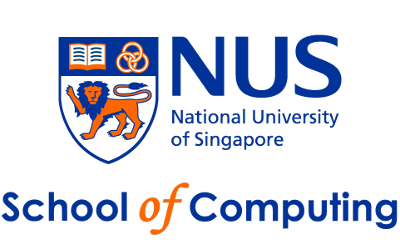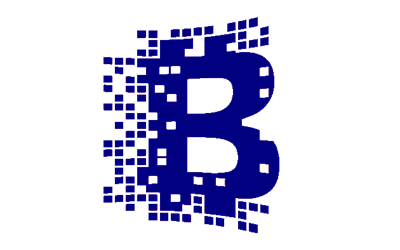



A blockchain, also called distributed ledger, is essentially an append-only data structure maintained by a set of nodes which do not fully trust each other. Nodes in the blockchain agree on an ordered set of blocks, each containing multiple transactions, thus the blockchain can be viewed as a log of ordered transactions.
Once a block, forever the block.
Tamper evidence.
Constructed distributed trustiness.
Blockchain technologies are taking the world by storm, largely due to the success of Bitcoin. Fundamentally, the blockchain ecosystem evolves from a series of conceptual or practical technologies in cryptography, security, database and distributed computing. We have always stood at the forefront and are committed to exploring more versatile technologies.


Beyond cryptocurrency, we actively translate our blockchain research outcome into real systems towards building the next-generation great decentralized application (DApp). DApp introduces new ways of information sharing and peer-to-peer trustiness handling. We ride on such technological advance to transform traditional industries, improving efficiency as well as reducing operational costs.

Profiling blockchain implementation for DApp and research, in terms of performance and security.
https://www.comp.nus.edu.sg/~dbsystem/blockbench/
As emerging blockchain implementations are diverse and complex, no industrial standard has yet been established for profiling their performance breakdown. Our research product BlockBench is the first-ever benchmark framework for permissioned/private blockchain systems such as Hyperledger Fabric, Ethereum and Parity. Details of BlockBench are explained in our research paper.
BlockBench is open source and free of use. Apart from research, we further provide consultation for customized benchmarking as well as certifying benchmark report, specially for blockchain adoption in healthcare DApp. In particular, we provide the following services:

Enhancing distributed consensus and smart contracts with hardware acceleration.
https://www.comp.nus.edu.sg/~dbsystem/hyperledger++/
As blockchain systems proliferate, there remains an unresolved scalability problem of their underlying distributed consensus protocols. Byzantine Fault Tolerance (BFT) consensus protocols offer high transaction throughput, but can only support small networks. Proof-of-Work (PoW) consensus protocol, on the other hand, can support thousands of nodes, but at the expense of poor transaction throughput. Two potential approaches to address these scalability barriers are by relaxing the threat model, or by employing sharding technique to deal with large networks. Nonetheless, their effectiveness on data-intensive blockchain workloads remains to be seen.
We study the use and effectiveness of trusted hardware on scaling distributed consensus protocols, and by their extension, blockchain systems. We first analyze existing approaches that harness trusted hardware to enhance scalability, and identify their limitations. Drawing insights from these results, we propose two design principles, namely scale up by scaling down and prioritize consensus messages, enabling the consensus protocols to scale. We illustrate the two principles by presenting optimizations that improve upon state-of-the-art solutions, and demonstrate via our extensive evaluations that they indeed offer better scalability. In particular, integrating our optimizations into Hyperledger Fabric achieves up to 7× higher throughput, while enabling the system to remain operational as the network expands. Another optimization that we introduce to Hyperledger Sawtooth allows the system to sustain high throughput as the network grows. Finally, our new design for sharding protocols reduces the cost of shard creation phase by up to 32×. Technical details are explained in our research paper.
Close ProjectBitcoin has demonstrated in the financial space that trusted, auditable computing is possible using a decentralized network of peers accompanied by a public ledger. As the blockchain technology arises, a lot of efforts have been devoted to the exploration of using blockchain to redefine traditional businesses. Among all kinds of concerns when using blockchain, data security and user privacy in a decentralized environment are of the topmost significance.
Our research aims to design a decentralized personal data management system that ensures users own and control their data. In particular, we focus on using smart contracts running on permissioned blockchains to automate access control that does not require trust in a third party. Unlike Bitcoin, transactions in our system are far beyond being strictly financial – they are used to carry instructions, such as storing, querying and sharing data. We devise protocols and guidelines of coding smart contracts towards maximum guarantees on security and privacy – the way that could harness blockchain into a well-rounded solution for trusted computing problems in society.
Close Project
Crafting storage system optimized for blockchain as well as other forkable applications.
https://www.comp.nus.edu.sg/~dbsystem/forkbase/
The emerging blockchain implementations and their applications counterpart require the underlying data storage to support three fundamental properties:
In addition, two advanced properties are also becoming essential:
To fulfil the above five key properties, MediLot’s blockchain abandons the conventional key-value storage engine, but alternatively proposes the first-ever blockchain-centric storage engine, ForkBase.
ForkBase facilitates data forking, version management and access control to the end of multi-tenant analytics. Moreover, ForkBase is endowed with a novel data de-duplication technology that can remarkably reduce data redundancy among data versions in the physical storage. With ForkBase, the blockchain implementation can be greatly simplified with the storage related implementation decoupled from the blockchain data structure. Technical details are explained in our research paper.
Close ProjectWhile blockchain is generally adopted for auditable data exchange among untrusted entities (individuals, companies, agents, etc.), massive data transfer between mutually validated peers is often via peer-to-peer (P2P) corporate network.
The corporate network is often used for sharing information among the participating companies and facilitating collaboration in a certain industry sector where companies share a common interest. It can effectively help the companies to reduce their operational costs and increase the revenues. However, the inter-company data sharing and processing poses unique challenges to such a data management system including scalability, performance, throughput, and security. To tackle the challenge, we developed BestPeer++, a system which delivers elastic data sharing services for corporate network applications in the cloud and blockchain ecosystem based on BestPeer – a P2P based data management platform.
By integrating cloud computing, database, blockchain, and P2P technologies into one system, BestPeer++ provides an economical, flexible and scalable platform for corporate network applications and delivers data sharing services to participants based on the widely accepted pay-as-you-go business model.
Close ProjectAs opposed to traditional, centralized applications, where the backend code is running on centralized servers, decentralized applications (DApps) have their backend code running on a decentralized P2P network. DApps can be viewed as a "blockchain enabled" website, where the smart contract is what allows it to connect to the blockchain. Smart contracts are so powerful that it enables us to restructure many traditional businesses. In particular, we have been spending effort on the revolution of healthcare service provision with the adoption of blockchain technology.
Today, patient EHR history is inevitably fragmented across health agencies she/he ever visited. By looking into the issue, trustiness is the main obstacle of inter-agency EHR data sharing. Such situation definitely needs to be changed towards building a patient-centric health system. The emerging blockchain technology can be relied on for the revolution, and we are specialized at architecting the healthcare blockchain ecosystem. To that end, our developing platform can provide the following services: